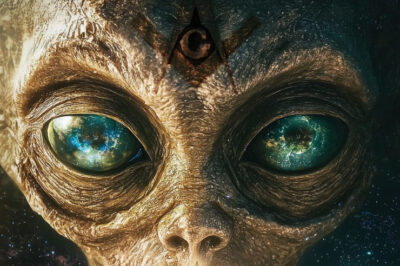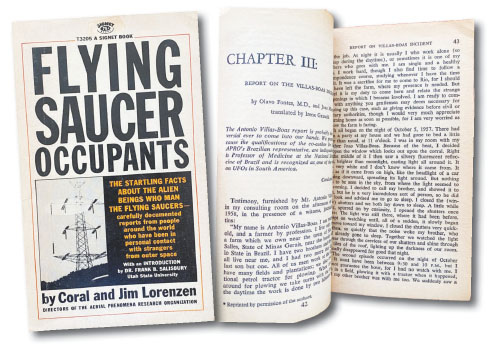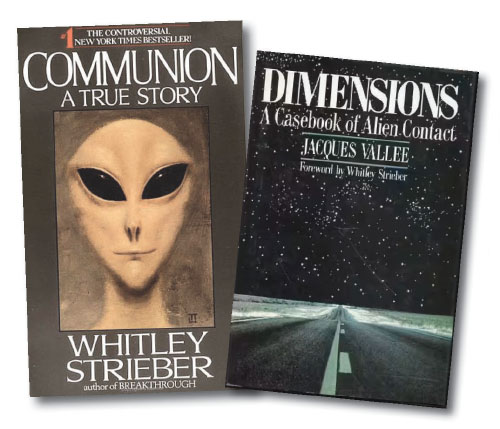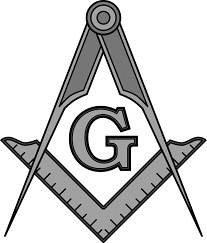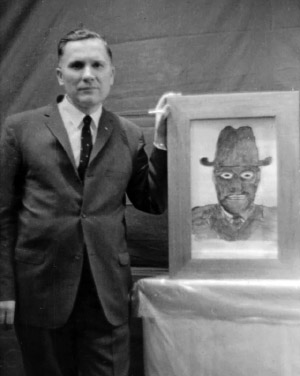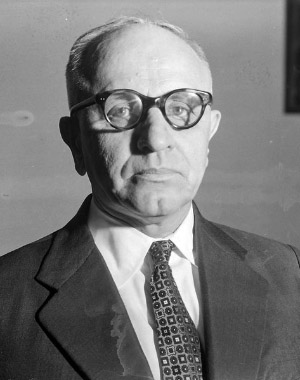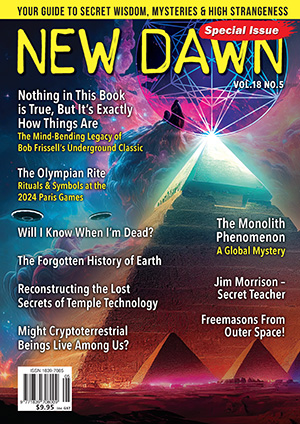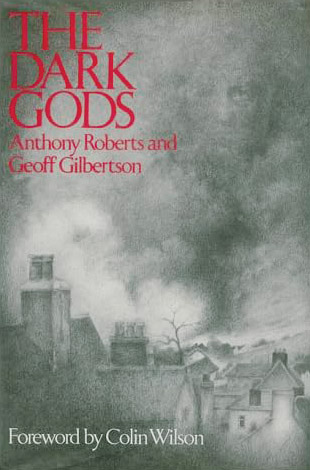From New Dawn Special Issue Vol 18 No 5 (Oct 2024)
My interest in the connection between Freemasonry and extraterrestrial encounters dates back to February 17, 1998, when I had a rather vivid and peculiar dream involving a Masonic Lodge, the very same Lodge in which I would eventually be initiated. I should point out that this dream preceded my initiation into Freemasonry by about four years. In fact, when the dream occurred I had no interest in joining Freemasonry or any other fraternal organisation. My knowledge of Freemasonry was limited to a select number of books I had read on the subject while in college and very little else.
This was the dream:
I walk into the Masonic Lodge on Cabrillo Avenue in Torrance, a building I have never before entered. I find myself sitting in a waiting room that contains a lot of empty wooden chairs. I look up at the walls. I see a very realistic painting depicting the face of a white owl. I glance back at the empty chairs, then turn to look once more at the painting. Now the white owl has changed. Its face has merged seamlessly with the attributes of an owl and that of an alien Gray as seen on the cover of Whitley Strieber’s 1987 book, Communion. (In 2015 a UFOlogist named Mike Clelland published a book called The Messengers: Owls, Synchronicity and the UFO Abductee, in which Clelland reports that many abductees often first see their abductors in the form of owls, but in 1998 I had no knowledge that anyone believed owls and extraterrestrials were in any way connected.)
In the dream I am not surprised by this shift. I simply continue staring at the empty chairs. After a while, I glance back at the painting. Now the owl is gone, and the impassive face of a Gray alien has taken its place. At this point, I rise from that uncomfortable little chair in the waiting room, stroll into the hall, and approach a pair of ornate wooden doors above which are carved the words: MASONIC RESEARCH CENTER. I push the doors open and see a vast library of old, rare books on the other side. I very much want to begin reading them all. One particular volume stands out at the bottom of the shelf. I pull out the hefty tome and lift it. In the dim light the title on the cover is unusually clear and is rendered in gothic, golden lettering: THE FREEMASONS & THE GUFFEY CLAN THROUGH THE AGES.
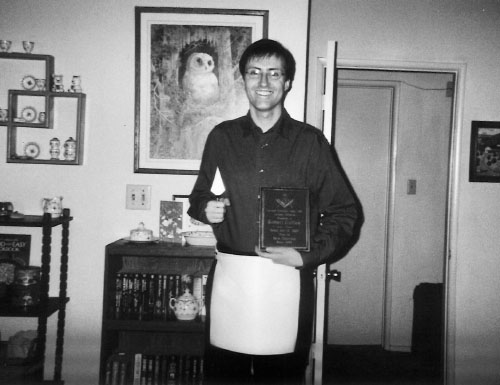
I don’t get a chance to read the book or even open it. Suddenly, I notice that strange, surreal creatures are wandering around in the musty, dust-speckled aisles. They weave in and out of the crowds of normal-looking humans (all of them elderly men) who are standing in the stacks looking at old books as well. The creatures appear to have emerged from a surrealist painting by the likes of a Max Ernst or a Remedios Varo, some mad visionary with a bent imagination. The creatures become aware of my presence and begin to hone in on me. So I put the book back on the shelf and run.
I find a staircase and traverse the steps two at a time. I pass the second floor, then the third floor (even though the Masonic Lodge in Torrance only has two floors). I press my palms against a metal door and emerge onto the roof. It’s nighttime. To my surprise, there’s a helipad on the roof. A helicopter, its blades spinning faster and faster, is waiting for me. For a moment I think I’ve escaped the angry creatures in the library. I start moving towards the helicopter, then pause abruptly. An eyeless stone dog stands between me and the helicopter. It’s motionless. I know it doesn’t want me to pass. Its grey, craggy, stone flesh morphs into real skin. The dog (a greyhound) turns bright red. Then it moves towards me, its crimson eyes growing larger and larger. I turn away from the hound and begin to clamber over the side of the roof. Fortunately, in the complete darkness, my palms discover thick hemp ropes down which I climb to the sidewalk below. I’m confident I’ve escaped… and then I wake up.
This oddly detailed dream, which I jotted down as soon as I awoke, places a picture of an alien in a Masonic antechamber, but the alien’s face is hidden behind a seemingly innocuous portrait that one might find in a waiting room in any doctor’s office in America.
Seventeen years after this unusual dream, during the summer of 2015, I spent several days camping in San Simeon, not far from Hearst Castle and Piedras Blancas. Hearst Castle, of course, was built by William Randolph Hearst, the main inspiration for Orson Welles’ Citizen Kane (1941), considered by numerous film scholars to be the greatest film ever made. Piedras Blancas was the site of the infamous B-flick, The Monster of Piedras Blancas (1958), which is all about a cryptozoological reptilian beastie that regularly emerges from the Pacific Ocean to behead the locals and feast on their remains when he’s not trying to abduct the lighthouse keeper’s nubile young daughter.
Perhaps it was the polar opposite extremes of these two cinematic influences that determined my equally schizophrenic reading material for this particular camping trip: Journey to the East by Herman Hesse, an acknowledged classic of Western literature redolent with extremely sophisticated esoteric symbolism, and Flying Saucer Occupants by Coral and Jim Lorenzen, which would appear to the casual observer to be little more than a lurid paperback collecting dubious claims of encounters with alien beings. Indeed, the front cover bears certain similarities to the layouts of supermarket tabloids like the late, lamented Weekly World News: a sensationalistic black and white photo depicting a glowing flying saucer hovering behind an electrical tower is juxtaposed with carnival-barker-style come-ons emblazoned in bold, orange letters:
THE STARTLING FACTS
ABOUT THE ALIEN
BEINGS WHO MAN
THE FLYING SAUCERS—
carefully documented
reports from people
around the world
who have been in
personal contact
with strangers
from outer space
In July of 1967, when this book was published, most reasonable people glancing at this cover at their local bookstore or newsstand would have immediately dismissed the contents of the book as outlandish trash, not worthy of their time or attention. How many literature professors, intimately familiar with the complex symbolism woven into Herman Hesse’s well-respected novel, would ever have deigned to open a copy of the Lorenzens’ book for even a few seconds? And yet, if this hypothetical literature professor had done so, he or she might have been pleasantly surprised to discover significant overlaps between the two works.
Hesse’s Journey to the East is steeped in hermetic, Masonic, kabbalistic, and alchemical symbolism. The book is a phantasmagorical allegory about an initiate (a young man named H.H.) in an ages-old secret society known as “The League.” Hesse employs layers upon layers of symbolism to chronicle the man’s physical and psychic journey from ignorance to illumination. Because I’m a 32nd Degree Scottish Rite Freemason, it was not difficult for me to recognise the numerous Masonic symbols embedded in Hesse’s novel. There’s no doubt in my mind that Hesse was a Freemason himself.
What did surprise me, however, is that such symbolism can also be found in the Lorenzens’ book about alien encounters – though I suspect the Lorenzens were not aware of this symbolism themselves. Such symbolism is not present throughout the book. Indeed, it appears only in a single chapter, Chapter Three, entitled “Report on the Villas-Boas Incident.”
The main feature of this chapter is an extensive scientific report regarding the first alien abduction investigation in modern history, now generally known as “the Villas-Boas Incident.” The report was written in 1958 by Dr. Olavo Fontes, at the time a Professor of Medicine at the National School of Medicine of Brazil, and a journalist named Joao Martins. The Antonio Villas-Boas case predates the far more famous 1961 Betty and Barney Hill abduction, the subject of a bestselling book entitled The Interrupted Journey by John G. Fuller. Fuller’s book became the basis for Richard A. Colla’s 1975 made-for-TV-movie The UFO Incident starring James Earl Jones and Estelle Parsons. The Villas-Boas case never quite received the same amount of attention as the Hill abduction, perhaps because it did not occur in the United States.
Villas-Boas was a twenty-three-year-old Brazilian farmer whose life abruptly turned upside down at 1:00 A.M. on Wednesday, October 16, 1957, when a metallic, oval-shaped object descended from the sky and landed in the very same soil Villas-Boas was in the process of tilling with the help of his family’s tractor. Nonhumans emerged from the craft, abducted Villas-Boas, and dragged him into the ship where they took blood samples from his chin, then forced him to have sex (twice) with a nude, humanoid blonde who certainly did not appear to be from Earth.
As I read the details of this encounter, I recalled a passage from Dr. Jacques Vallee’s 1988 book Dimensions: A Casebook of Alien Contact, in which Vallee commented that many of the most confusing and absurd details associated with the testimonies of alien contactees sometimes reminded him of the seemingly inexplicable initiation rites practised by secret societies throughout the ages:
Is this confusion technique deliberately used to effect change on a major scale? Answering such questions could also help us to understand the strong resemblance that anyone who has examined the beliefs of esoteric groups could not fail to note between certain UFO encounters and the initiation rituals of secret societies. This “opening of the mind” to a new set of symbols that is reported by many witnesses is precisely what the various occult traditions also try to achieve.
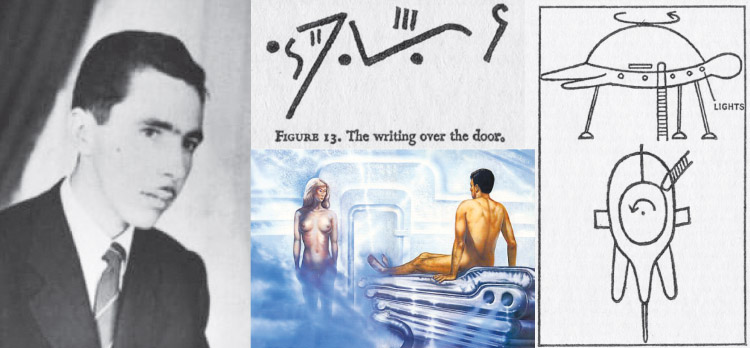
The Initiation of Antonio Villas-Boas
Many of the details reported by Villas-Boas mirror Masonic initiation rites. From an esoteric perspective, Villas-Boas’ name itself is of considerable interest. Names (both proper and place names) have always been intertwined with esoteric Fortean phenomena. For example, the late James Shelby Downard has written extensively about the connections between hermeticism and toponymy, or the study of place names, in such essays as “The Call to Chaos: From Adam to Atom By Way of the Jornada del Muerto” and “Sorcery, Sex, Assassination and the Science of Symbolism.” Loren Coleman, in his 1983 book Mysterious America, calls this line of research “the Name Game”:
As you travel about in this Mysterious America, be it on your way to work or play, or to some vacation destination, you pass many streets, or transit many towns with names we all have come to take for granted. How often have we paused to think about the meaning behind the names? Was the word of some special significance? Was this location named for a person, another place or an event? And if it was named for a person, what did their name originally mean? And who and why was it tacked on to this place? Are there some harmonic insights we can gain from looking a little deeper? Why do some places or even people seem to be the focus of inexplicable events while others are the host of more mundane incidents?
In Chapter 3, I have discussed devils’ names and Fortean places. The fact that some areas had strange and weird vibrations or events connected to them gave native Americans and later settlers enough evidence to actually label these locales after the Ruler of Hell. In America, the use of the name “devil” regarding certain geographical fixtures, therefore, gives some indication of a history of mystery surrounding these spots.
There is indeed a power in place names that can be traced back much farther than the arrival of the Europeans in North America. Other researchers have noted the undeniable significance of this power. Former police officer David Paulides, author of the Missing 411 series of books regarding a slew of mysterious disappearances in our National Forests, recently commented on this Name Game himself while being interviewed about his 2014 book, Missing 411—The Devil’s in the Detail:
The word “devil” and other names that have negative connotations seem to come up with disappearances an abnormal amount of time, as this “Devils Nest” [in the Rocky Mountains] did, as in the name The Devil’s in the Detail, this latest book. So that title has double meanings, meaning that the “devil” name is used a lot in locations where these people disappear […] and the detail is important. If we could really know why [these locations] were named that way, that would be fascinating.
Related to toponymy is anthroponomastics, or the study of proper names. Charles Fort, the father of paranormal research, commented on anthroponomastics several times throughout his four books. For example:
In the New York Herald, Nov. 26, 1911, there is an account of the hanging of three men for the murder of Sir Edmund Berry Godfrey on Greenberry Hill, London. The names of the murderers were Green, Berry, and Hill. It does seem that this was only a matter of chance. Still, it may have been no coincidence, but a savage pun mixed with murder…
There is a view by which it can be shown, or more or less demonstrated, that there never has been a coincidence. That is, in anything like a final sense. By a coincidence is meant a false appearance, or suggestion, of relations among circumstances. But anybody who accepts that there is an underlying oneness of all things accepts that there are no utter absences of relations among circumstances – or that there are no coincidences, in the sense that there are no real discords in either colours or musical notes…
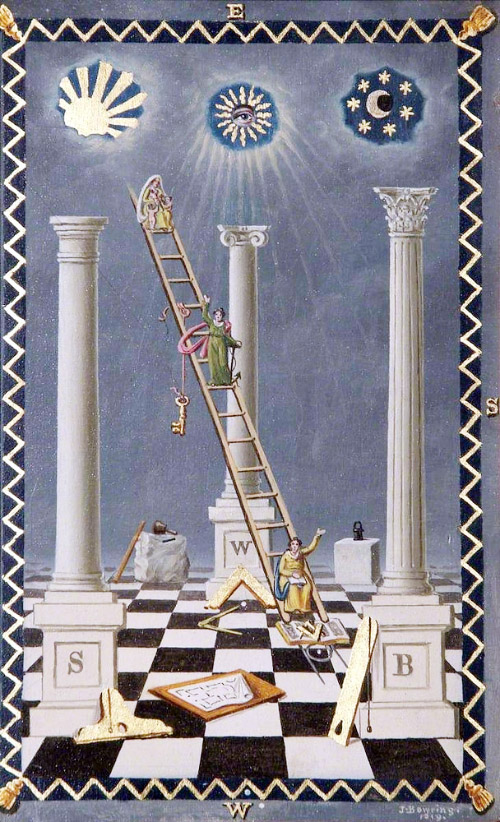
The name “Villas-Boas” is loaded with such coincidental/non-coincidental Masonic significance. In every Masonic Lodge stands two pillars: Boaz and Jachin. According to Albert Pike, who designed the thirty higher degrees of Scottish Rite Masonry as they are performed today, “Unity is Boaz, and the Binary is Jachin. The two columns, Boaz and Jachin, explain in the Kabalah all the mysteries of natural, political, and religious antagonism.” According to scientist Richard Schowengerdt, a 33rd Degree Scottish Rite Freemason, Boaz and Jachin “are the twin pillars of equilibrium.” Unity is Boaz. Boaz is unity. And what could be more symbolic of “unity” than people from two different worlds bonding together in sexual union in order to produce offspring, which is what ostensibly occurred aboard an interplanetary spacecraft in Brazil in 1958, according to the testimony of Villas-Boas.
Of course, Boas’ is only the first of many similar reports that will follow throughout the decades. In Latin, the word “villas” translates as “houses.” Therefore, his name might be translated as “Houses of Unity.” This is exactly what Masonic Lodges were intended to be from their very inception – temporary autonomous zones where members of various religions, cultures and social classes could unite under a single banner, i.e., the melding of various “worlds” into one.
It’s interesting to note that Villas-Boas’ encounter occurred in the early morning hours of October 16, 1957, less than two weeks after the launch of the first artificial Earth satellite, Sputnik 1. Symbolically, Sputnik pierced the veil between worlds, initiating the slow deterioration of the artificial boundaries between nations, a natural evolution of the universalist philosophies of Freemasonry.
As if on purpose, Masonic symbolism is woven throughout Villas-Boas’ encounter. After initially being pursued by a lone five-foot-tall humanoid wearing gray overalls and a helmet, Villas-Boas is subsequently attacked by “three men” who proceed to subdue him. This mirrors the third degree initiation in which the candidate is attacked by “three ruffians” who use violence in an attempt to wrest a sacred object from the initiate. As even the most casual student of Freemasonry knows, the number three recurs throughout the various degrees of Masonry. As I wrote in my first book, Cryptoscatology: Conspiracy Theory As Art Form:
[N]ot only are there three original Grand Masters, three assassins, and a total of thirty-three degrees of the Masonic hierarchy, but there are also three Principal officers, three symbolic steps […], three obligations, three lights upon the Altar, three “pillars” that support the Lodge, and three knocks that gain the candidate admission into the Lodge, followed by three more knocks to summon the Brethren.
The number three recurs throughout Villas-Boas’ tale as well. Not only is he attacked by the aforementioned three humanoids, but at one point he mentions that the “weird men” were wearing “three-cornered” metal plates on their helmets, from the forehead of which “sprouted three round silvery metal tubes.” What appears to be a clock inside the craft keeps time in three-hour increments: “There was a hand on it and a black mark that corresponded to our 6 o’clock. Other markings of the same kind were to be seen where our 9 o’clock and 3 o’clock stand.” He also mentions “three metal poles” affixed to a windowless room in the craft (just as a Lodge room has no windows). These “poles” must have been important as one of the humanoid men points at them as if wanting Villas-Boas to take special note of them. Villas-Boas describes them as appearing to be “on fire” even though he can’t “feel any warmth coming from them.” These “poles” are analogous to the three pillars of Freemasonry. Beyond Jachin and Boaz, there is indeed a third pillar. Richard Schowengerdt has said:
[T]here’s a third pillar which is not mentioned in Masonry much but it’s alluded to when they talk about the three lights of Masonry – the Master, Senior Warden, and Junior Warden – that the central pillar is the Master who harmonises these two streams of the two pillars. Wisdom, Strength, and Beauty. And […] the Master is considered to be Beauty, in the centre, and there’s Strength and Wisdom, the other two poles.
Not only does Villas-Boas mention “three legs” of a tripod that hold up the craft many times throughout his account, but he goes out of his way to stress that sleep eluded him for several days after his encounter; not until “the third night” did sleep return.
Villas-Boas describes being guided up “a ladder” that leads him to his experiences with the people of the stars or the heavens; the path of the Masonic initiate has been illustrated in this way, symbolically, for centuries. (See William Steven Burkle’s essay “The Masonic Ladder and the Great Chain of Being,” available at Freemasons-freemasonry.com, for more information about the esoteric symbolism of the Masonic Ladder.)
Villas-Boas describes his arms being “held fast by two of the men,” which is what occurs in the third degree. The ruffians undress him, which also happens in the third degree, then “make signs” at him.
Even more important than the ladder in Freemasonry is the “square.” The central symbol of Freemasonry has always been the square and compass. The question, “Are you on the square?” became a surreptitious method of asking a stranger if he was a fellow Freemason. Of course, over time, this eventually filtered down into popular slang as the question “Are you being square with me?” (i.e., “Are you being honest with me?”). Villas-Boas mentions squares throughout his account. Not only is he led into a “small square room” by the three ruffians, but he also notes “many little square lamps fitted into the border where the walls met and circling it entirely.”
The core of the ship is described as an egg-shaped oval bordered on either side by two small, square rooms. The outside of the craft itself is described as an egg held up by three poles or pillars. The egg symbolism is suggestive on several different levels, as Villas-Boas’ entire purpose for being taken aboard the craft is to fertilise the eggs of the female entity with whom he is compelled to have sexual relations. As Albert Pike notes in his influential Masonic book, Morals and Dogma, the letter “G” circumscribed by the square and compass, a symbol found in every Masonic Lodge, is representative of “the generative principle,” i.e., the act of sexual union, the ultimate symbol of “unity” or balancing “the cosmic she and he,” which was the principle goal of the ancient kabbalistic alchemists.
The symbolism continues as the three ruffians extract DNA samples from Villas-Boas and collect his blood in a “chalice-shaped vessel.” A blood-filled chalice immediately evokes images of the Holy Grail, which has been tied into Masonic lore in such popular books as Holy Blood, Holy Grail by Michael Baigent, Richard Leigh and Henry Lincoln. These three authors believe that “the Holy Grail” is symbolic of a particular bloodline, not a physical chalice. Was Villas-Boas chosen at random by these beings, or was there something about his bloodline – his heritage, his DNA – that made him an ideal candidate for this ritualistic ceremony to balance “the cosmic she and he”?
As in any mind-expanding ritual, Villas-Boas’ body undergoes extreme stress before the moment of illumination. After being exposed to some kind of strange-smelling smoke, Villas-Boas vomits. In The Teachings of Don Juan: A Yaqui Way of Knowledge, Carlos Castaneda reports that “an effortless sensation of vomiting without the contraction of the diaphragm” preceded his own initial mystical experience induced by the consumption of the sacred peyote plant. This experience is quite similar to the age-old folktales of a hapless villager being abducted by fairies and dragged down into subterranean caverns where the human is given strange-tasting pieces of bread or cake imbued with an otherworldly aroma that causes the abductee to undergo a mind-altering experience and fall asleep for many years, as happens to the title character of Washington Irving’s classic 1819 short story, “Rip Van Winkle.” The connection couldn’t be clearer when Villas-Boas mentions that the shoes of his abductors look “like those described in the fairy tales of old.”
It’s also worth noting that one of the three ruffians “spread a liquid all over” his skin with an object “that looked like a wet sponge.” The liquid “was clear as water but much thicker and odourless,” which parallels the story Albert K. Bender tells in his 1962 book Flying Saucers and the Three Men. Since his tale was first released, Bender’s account of being abducted by a trio of otherworldly “men in black” has filtered into mass consciousness via a steady stream of blockbuster films, TV shows, cartoons, and science fiction novels. Before the “men in black” became a household phrase, it was known only to a select group of UFOlogists familiar with Bender’s odd tale. Bender insisted three extraterrestrial beings dressed in black materialised in his bedroom, then whisked him away to a subterranean laboratory beneath Antarctica where, with “great efficiency,” “[t]hree beautiful women, dressed in tight white uniforms”:
…removed every stitch of clothing, leaving me naked as the day I was born. For a moment all three of them stood there, looking at my body, but I believe the motive was not one of curiosity – they probably were checking to see if they missed anything, for one of them then removed my watch.
Two of them remained beside me as the other walked into the shadows and returned with a metal vial containing a liquid which they poured over my body. Then the three massaged the liquid into my skin. As they did so my body became warm as if heat were being applied. They massaged every part of my body without exception, turning me over on my stomach and my sides. They expressed no emotion, neither that of revulsion nor enjoyment, as they carried out the matter.
Villas-Boas’ claims about being similarly anointed by three supernal beings was reported to Fontes and Martins in February 1958 but did not appear in print until the publication of the June 1962 issue of a Brazilian UFO periodical entitled SBESDV Bulletin, by which point Bender’s book would already have been written, if not published. Villas-Boas’ story wasn’t widely reported in the United States until the release of the Lorenzens’ aforementioned 1967 book, Flying Saucer Occupants.
Consider the significance of such peculiar recurring details, and not just the ritualistic baptism in water – which is described by both Bender and Villas-Boas in such a blatantly sexual context that the whole ceremony comes off as a surreal distortion of the Catholic sacrament, or perhaps a return to the sacrament’s original source, as Masonic scholar C.W. Leadbeater claims the Catholic baptism has its roots in the Ancient Mysteries from which Masonry itself emerged – but also the Masonic recurrence of the number three. What are the chances of these details overlapping between two different reports from two very different people dwelling in two separate countries? Also worthy of note is the fact that Bender claims his abduction occurred in 1953, four years before Villas-Boas’ encounter.
Reopening the Investigation
In 2000, almost ten years after Villas-Boas’ death in 1991 at the relatively young age of fifty-two, UFOlogist Pablo Villarrubia Mauso reopened the investigation into Villas-Boas’ abduction and uncovered fascinating information never reported by the Lorenzens in Flying Saucer Occupants or elsewhere. Mauso went to the trouble of visiting the original landing site in Brazil and interviewed Villas-Boas’ nephew, Joao Francisco de Queiroz, who informed Mauso that the scene of Villas-Boas’ abduction had been a nexus for paranormal phenomena as long as the local inhabitants could remember:
“During the night, right there at Hacienda Aldeia o Mata [the phrase ‘Aldeia o Mata’ translates roughly from Portuguese as ‘Village in the Woods’], we would all listen in terror to the sound of a hand beating the handle of a large corn-grinding mortar inside a shack. When we went to check, there was no one around and the handle remained tied, suspended, and the mortar’s opening was covered by a large clay urn.” And there was more. Joao Queiroz also said that they could hear the sound of a galloping horse that couldn’t be seen, while the farm hands told stories of a “black-hooded phantom horseman” […]. We returned to Queiroz’s house. His wife, Maria Olimpia, told us that her husband’s parents had committed suicide in 1947 and that the local peasants attributed the tragedy to the fact that the area was bewitched.
Even more intriguing, perhaps, is the fact that Villas-Boas was abducted more than once – the second time by members of official government agencies in the United States. According to Villas-Boas’ seventy-year-old sister, Odercia Villas-Boas, soon after telling his story to Dr. Olavo Fontes and Joao Martins, Antonio received a visit from “five men dressed in green uniforms” who compelled him to travel with them to the United States:
“Some [of these men] spoke Portuguese; others English. I think they were from NASA. They kept visiting several times over eight or ten years. […]. He was subjected to questioning and the lie detector in California. He was taken to an open area where the remains of a flying saucer could be found. They then showed him another, in good condition, inside an enclosed area like a museum, asking him if it was identical to the one he had seen. He told me that it was very similar. He was always accompanied by a journalist who had a foreign name and acted as an interpreter, and was always surrounded by uniformed American personnel.”
“He was in the United States for three days,” Odercia told us. “They later gave him two properties near San Francisco and San Rafael. I managed to see the deeds. They sent him back to Rio, where he spent between fifteen and twenty days in a hospital, undergoing new examinations and tests. This affected him greatly, it seems. According to the medical report, Antonio was in excellent mental health and not crazy.”
Did US authorities try to purchase Antonio’s silence by giving him properties in California? Why was he not allowed to speak publicly?
Even if the general scientific community did not take Villa-Boas’ story seriously, it seems that someone in a position of authority was taking it quite seriously indeed. The reason I myself took Villa-Boas’ story seriously when I first encountered it is because I recognised the obvious Masonic symbolism contained within it. It’s more than possible that certain initiated individuals in the corridors of power had a similar reaction back in the late 1950s and responded accordingly.
Freemasonry & Extraterrestrial Encounters
In 2003, between undergoing the first and second degrees of Freemasonry in the very same building that featured so prominently in my February 17, 1998 dream, a fellow initiate lent me a book entitled At the Sign of the Square and Compasses by Freemason Geoffrey Hodson that also seems to connect Masonic rituals with the manifestation of entities just as diminutive as the extraterrestrials described by so many abductees. In Section 3 of the book, “The Lesser Mysteries Continue to be Enacted,” Hodson describes – in a rather nonchalant manner – how “little people” or “gnomes” would sometimes appear in his Lodge during the enactment of the initiatory degrees:
If the [Junior Deacon] does not command [the] respect [of these little people], they will laugh and mimick him and the candidate. In fact the gnomes are amused by most of the ceremony, except at those times when its force arrests them, when they become serious for the time being. The gnomes play about the temple floor, march with grotesque and absurd mimicry behind the procession, and follow the journeys, thoroughly enjoying themselves all the time and really getting much fun out of the ceremony. They are a superior kind of gnome – in a way probably representatives of their race, sent by their superiors in that capacity…
These gnomes might be called “ceremonial” gnomes. They are dressed in an imitation of our [Masonic] clothes, generally in bright colours, vivid red and green being the most common… The same is true of apron, collar, and jewels, which they assume on occasion. Apparently some of these little people stay in the temple, as I have noticed them, before the ceremony starts, and frequently join the procession on entrance, following the [Rightful Worshipful Master] through the two lines of officers – sometimes with a R.W.M. of their own, with [Deacons] and staff complete…
I have not usually noticed more than three gnomes at a time in the temple, though there may be more…
It could be significant that Hodson often noticed the “little people” appearing in the Lodge in groups of three. If we extend this line of thinking further, it might be equally significant that Whitley Strieber, the aforementioned author of Communion, has discussed the importance of the number three in his own otherworldly encounters. According to Peter Levenda, author of Sinister Forces: A Grimoire of American Political Witchcraft, Strieber has often spoken of:
[…] hearing “nine knocks” associated with visits by his alien stalkers […]. The “nine knocks” of Whitley Strieber’s experience is related both in Transformation and in his later book, Breakthrough. They took place on the evening of August 27, 1986 while he was at his upstate New York cabin. There was a definite series of three distinct sets of three knocks, for a total of nine knocks, coming from a corner of the ceiling. Strieber seemed to understand this as an invitation to go outside and meet “the visitors”… an invitation he declined, from fear. His cats also reacted in terror, staring at the spot the knocks came from.Then, as he relates in Breakthrough, exactly eighteen months to the day from his experience of nine knocks, an entire town – Glenrock, Wyoming – was awakened at 2:45 A.M. on February 27, 1988 by the same phenomenon: nine knocks in three groups of three on the sides of their houses, their cars, their doors. This was related in the local newspaper, but no one ever discovered the cause of this bizarre event.
And when Strieber wrote The Secret School in 1997, it contained nine “lessons” divided into three “triads.”
Rocket engineer Jack Parsons, co-founder of the Jet Propulsion Laboratory, claimed to have communed with an alien being in the Mojave Desert in February of 1945; significantly, this close encounter was followed by mysterious knocks that arrived in three sets of three on January 10, 1946 while Parsons performed magic rituals in his home in Pasadena.
What could be the significance of frequently discredited, dubious phenomena like UFO sightings and alien encounters being in some way connected to Masonic symbolism that dates back to antiquity? Why would superior beings from lightyears away feel the need to mimic esoteric rituals enacted for centuries by Freemasons and other related secret societies? Of course, it could be that these are the wrong questions. Perhaps these “superior beings” aren’t mimicking anything at all of human origin. Perhaps the Freemasons are mimicking them. Perhaps these beings are the source of the symbolism in the first place.
Consider this passage from Anthony Roberts and Geoff Gilbertson’s little-known 1980 book, The Dark Gods:
A bold acknowledgement of the supernatural, ultraterrestrial element at the roots of Masonry was made by a certain Dr. George Oliver, writing in 1823. Dr. Oliver was a historian of the masonic tradition and he openly recognised that the inner secrets of Masonry were not only confined to this planet. He wrote: “The ancient masonic tradition – and I have good reasons for believing this – says that our secret science existed before the creation of this globe and that it was widespread throughout other solar systems.” The “good reasons” that Dr. Oliver professed stemmed from the archives of the masonic order to which he belonged.
Therefore, the speculations laid out here regarding the connections between Masonic symbolism and alleged extraterrestrial encounters are not at all new; in fact, they date back almost two hundred years, if not more.
It might be worthwhile for dedicated UFOlogists to revisit classic abduction reports aside from that of Antonio Villas-Boas and see if such blatant Masonic symbolism appears in those cases as well. This could very well be the key to unlocking essential aspects of what has come to be known as the alien abduction phenomenon.
Footnotes
1. Robert Guffey, “Dream (2-17-98),” Black Book Vol. 1 (n.p.), p. 43.
2. It’s worth noting that this abduction occurred on a Wednesday. According to Chapter One of John Keel’s 1970 book UFOs: Operation Trojan Horse (see pp. 19-20), most UFO sightings occur on Wednesday: “If the UFO phenomenon had a purely psychological basis, then there should be more sightings on Saturday night when more people are out of doors, traveling to and from entertainments, etc. Instead we find that the greatest number of sightings are reported on Wednesday, and then they slowly taper off through the rest of the week. The lowest numbers occur on Tuesday […]. This does not mean that flying saucers are out in force every Wednesday night. But when there is a large flap, it nearly always takes place on Wednesday.”
3. Jacques Vallee, Dimensions: A Casebook of Alien Contact (Chicago: Contemporary Books, 1988), p. 188.
4. Loren Coleman, Mysterious America (Winchester, MA: Faber & Faber, 1983), p. 235.
5. “David Paulides Missing 411 Devil’s in the Details Part 1 of 2—December 13, 2014,” YouTube.com (accessed 20 Jan. 2018).
6. Charles Fort, The Books of Charles Fort (New York: Henry Holt, 1957 [1941]), pp. 848-50.
7. Albert Pike, Morals and Dogma (Richmond: L.H. Jenkins, 1956 [1871]), p. 772.
8. Robert Guffey, “Rosicrucianism, Freemasonry, and Esoteric Science,” Nexus Vol. 23, No. 4 (June/July 2016), p. 41.
9. Coral and Jim Lorenzen, Flying Saucer Occupants (New York: Signet Books, 1967), p. 46.
10. Robert Guffey, Cryptoscatology: Conspiracy Theory as Art Form (Walterville, OR: TrineDay, 2012), p. 172.
11. Lorenzen, Flying Saucer Occupants, p. 51.
12. Ibid. p. 55.
13. Ibid. p. 57.
14. Guffey, “Rosicrucianism, Freemasonry, and Esoteric Science,” p. 41.
15. Lorenzen, Flying Saucer Occupants, p. 59.
16. Ibid. p. 67.
17. Ibid. p. 49.
18. Ibid. p. 47.
19. Pike, Morals and Dogma, p. 632.
20. James Shelby Downard, “The Call to Chaos,” in Adam Parfrey (ed.), Apocalypse Culture: Expanded & Revised Edition (Portland: Feral House, 1990), p. 309.
21. Lorenzen, Flying Saucer Occupants, p. 50.
22. Carlos Castaneda, The Teachings of Don Juan: A Yaqui Way of Knowledge (New York: Pocket Books, 1975 [1968]), p. 40.
23. Lorenzen, Flying Saucer Occupants, p. 52.
24. Ibid. p. 49.
25. Albert K. Bender, Flying Saucers and the Three Men (Clarksburg: Saucerian Books, 1962), pp. 153-55.
26. C.W. Leadbeater, Ancient Mystic Rites (Wheaton, IL: The Theosophical Publishing House, 1986 [1926]), p. 32.
27. Pablo Villarrubia Mauso, “Antonio Villas-Boas: Total Abduction,” Inexplicata: The Journal of Hispanic Ufology, Inexplicata.blogspot.com, November 5, 2007 (accessed 20 Jan. 2019).
28. Ibid.
29. Geoffrey Hodson, At the Sign of the Square and Compasses (Madras, India: Vasantra Press, 1976), pp. 66-67.
30. John A. Keel would definitely want me to mention that August 27, 1986 was a Wednesday.
31. Peter Levenda, Sinister Forces Book Three: The Manson Secret (Walterville, OR: TrineDay, 2006), pp. 273-74.
32. Jacques Vallee, Messengers of Deception: UFO Contacts and Cults (Brisbane, Australia: Daily Grail Publishing, 2008 [1979]), p. 12.
33. John Carter, Sex and Rockets: The Occult World of Jack Parsons (Port Townsend, WA: Feral House, 2004 [1999]), p. 126.
34. Anthony Roberts and Geoff Gilbertson, The Dark Gods (London: Panther Books, 1985 [1980]), p. 235.
© New Dawn Magazine and the respective author.
For our reproduction notice, click here.

